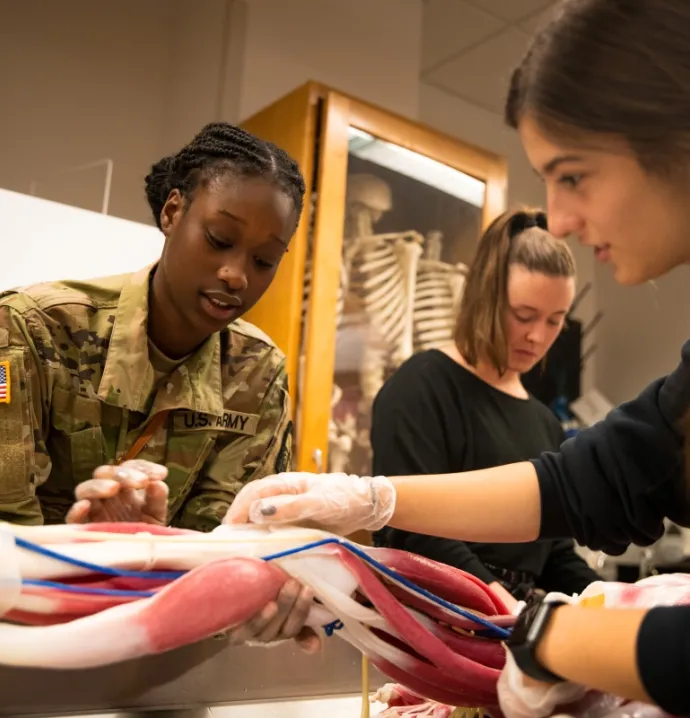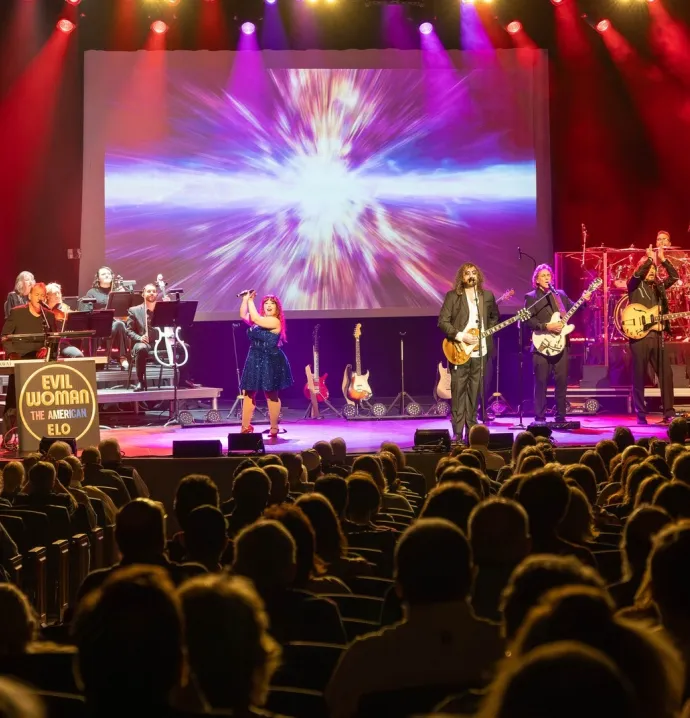A history of witchcraft
A history of witchcraft
Witches have long been part of popular culture, from “Bewitched” to “Charmed” to the countless children knocking on people’s doors dressed as a witch this Halloween. But those modern myths have dark origins of persecution, prosecution and execution. University of Northern Iowa history professor and department head Jennifer McNabb has studied the causes and consequences of witch hunts for years, publishing articles in journals and writing material for textbooks on Western civilization and European history. She also recently published a 10-lecture series on the popular online audiobook platform Audible titled “Witchcraft in the Western Tradition.” As Halloween nears, McNabb spoke with Inside UNI about her research and its applications for today.
How much of what we associate with witches and witchcraft is accurate, and how much of it is derived from myths and stereotypes?
If you look at a witchcraft costume, there are going to be some very typical elements. You're going to see a broom, you're likely going to see black garb and maybe a pointy hat. If the costumes get really elaborate, you might see facial warts, or some other kind of physical deformity. Today we assign these more benign sorts of connotations, but they can have some dark associations if you look at the actual stories. Like the broom. “Oh, the broom lets them fly.” But where were they going? The stories would say witches flew off into the woods for their orgiastic diabolical ceremonies, where they copulated with the devil and sacrificed children.
In the business with physical deformities, or physical distinguishing characteristics, we can even go back to the Wizard of Oz, and the fact that the Wicked Witch of the West had the green skin. I can tell you, I did not run across 16th-century records of green witches. But I think the point there was to drive home some kind of physically identifiable characteristic that could be a sign of the individual's relationship with the devil. One of the legal processes involved in the prosecution of witches involved searching the body of the witch for what's known as the witch’s mark. These were birthmarks, warts, freckles, or some other kind of skin condition that a jury of matrons, a jury of wise women of the town, could come in and say, “Oh, here we go. There it is. There's the evil spot. Well, it's confirmed, then -- here is real evidence.” And so you have to imagine how terrifying that would be. A lot of the stereotypes that we hold down to the present day are born out of stereotypes that were established and really reinforced powerfully during the periods of witchcraft prosecution.
What is the value in studying the history of witches?
That is a question that can be answered in a number of different ways. I finalized the Audible course in March, right as the coronavirus was starting to get a lot of national attention. I was finishing the final lecture about the legacy of witchcraft, and the pandemic really colored the way that I approached the final revisions to that script. Sometimes you look at witchcraft, external to the situation, and you think, “this is mind boggling.” How in the world did people think that others had made a compact with the devil, that magic was real, that you could use it to hurt someone, or make love potions? And it seems like one of those moments where past people feel very different from us moderns. It's one of those places that modern people often feel quite superior. And then, last March, as I was wrapping things up, it felt like I was watching the world fall apart a little bit. And it gave me a really interesting appreciation for a subject I've studied so many times, but never with this kind of urgency. Fear is really what drove accusations of witchcraft during the centuries of persecution and of prosecutions.
And the course actually carried witchcraft up into the 20th century and looked at the satanic panic of the late 20th century. Intolerance continues. You can just see so many inequalities in our own world that makes us realize that witches may have different names today, and slightly different identities, but there are always people who are “other,” and witches were “other” in their own society. They were different somehow, they were threatening somehow, they had access to power, or were perceived to have access to power in ways that were thought to be fraudulent, or damaging for the future of Christianity. And I think some of those legacies have a lot of impact in our own world.
What are the origins of witches and witchcraft?
It's really as old as human society itself. The thought that certain individuals were imbued with supernatural powers, that is very, very old. The desire to manipulate the natural environment or the thought that certain people knew things or had access to special knowledge - you can trace that from ancient societies down to the present. My course is “Witchcraft in the Western Tradition.” Throughout the medieval centuries, witchcraft, or I should say magic, could run either direction - as a benefit or as a source of hurt and harm. In the later Middle Ages, there were a number of contexts that made magic almost exclusively aligned with its darker side, with the side that caused harm, and with diabolism. So in the 1300s and 1400s, we began to see this synthesis of ideas that aligned workers of magic with a satanic element. There were problems with heresy and challenges to the supremacy of the Christian church and a lot of concern about bringing people outside the proper bounds of Christianity into conformity. And that attack on heresy and the fear of diabolism sort of gels together in a really compelling way to kick off the witchcraft centuries, with what some scholars have called the witch-craze, but which I think is more accurately described as witch hunting.
What period in history were these witchcraft prosecutions taking place?
Essentially, scholars talk about the witchcraft centuries as spanning from the 1400s to around 1750. Those were the centuries in which witchcraft was a spiritual crime, but also beginning to be made increasingly illegal at the secular level. So I've talked about witchcraft persecution. But I've also talked about witchcraft prosecutions. And those were the legal processes by which you could be brought to justice and executed.
So, from the 1400s and 1500s, we start seeing laws being passed to prosecute and punish witches. In the 1700s, we start to see the repeal of those laws. From what we can tell, people didn't necessarily stop believing that witches were out there or that witches could cause harm. What turned the tide was the decision on the part of the ruling elites not to accept the old standards of proof. They became increasingly more educated, legal training became more of a requirement, and there’s more emphasis on reason with the Scientific Revolution and the dawn of the Enlightenment. People were searching for natural laws, explaining the universe in exciting new ways, more accurate ways. And there's a significant new understanding of how reason can be applied -- does witchcraft fit the standards?
Witchcraft seems to be almost making a comeback with the Witchtok corner of Tiktok and the WitchesvsPatriarchy subreddit, among other examples. What do you make of the younger generations’ newfound interest in witches as a way to connect with nature and spirituality?
There are some groups like Wicca that have crossed into this more benign territory with a celebration of nature and feminine power. But some of them are really about connecting to and celebrating the environment. It's an interesting kind of rejection of the claustrophobia of modern society. It's a real celebration of nature. You dress simply in rough-spun clothing, maybe you go out at the solstice and celebrate the coming of new seasons. It's about being in tune with nature, and there's a lot less to reject in these movements, in that there's a lot less to object to, because they're not seen as posing any real threat.
I think that some of the more outspoken proponents of these groups have talked about reclamation, that they are reclaiming traditions of female power particularly, and wresting them away from centuries of patriarchal oppression. And you see that celebrated in a lot of pop culture, where witches are enlisted to help save the world, not destroy it, to help heal people instead of hurt them -- everything from Willow in “Buffy the Vampire Slayer” to many of the witches in “Supernatural.” There is this reconceptualization of the powerful woman and I think that's a provocative narrative. Even if people aren't signing up to be part of these groups, there is something that is sort of liberating about rescuing the Earth woman from the grips of the transgressive deviant of past centuries. And that's really when they were seen as - transgressive deviants. And now witchcraft isn't; it's being regularized.They're not these creatures of great fear anymore. And in some ways, the stereotypes have done that, for all that they represent the prejudice of the past. In the present, there's something comfortable about the old woman and the broom and the cat, like, “Yeah, I know that. It's Halloween again. Bring on October.”




